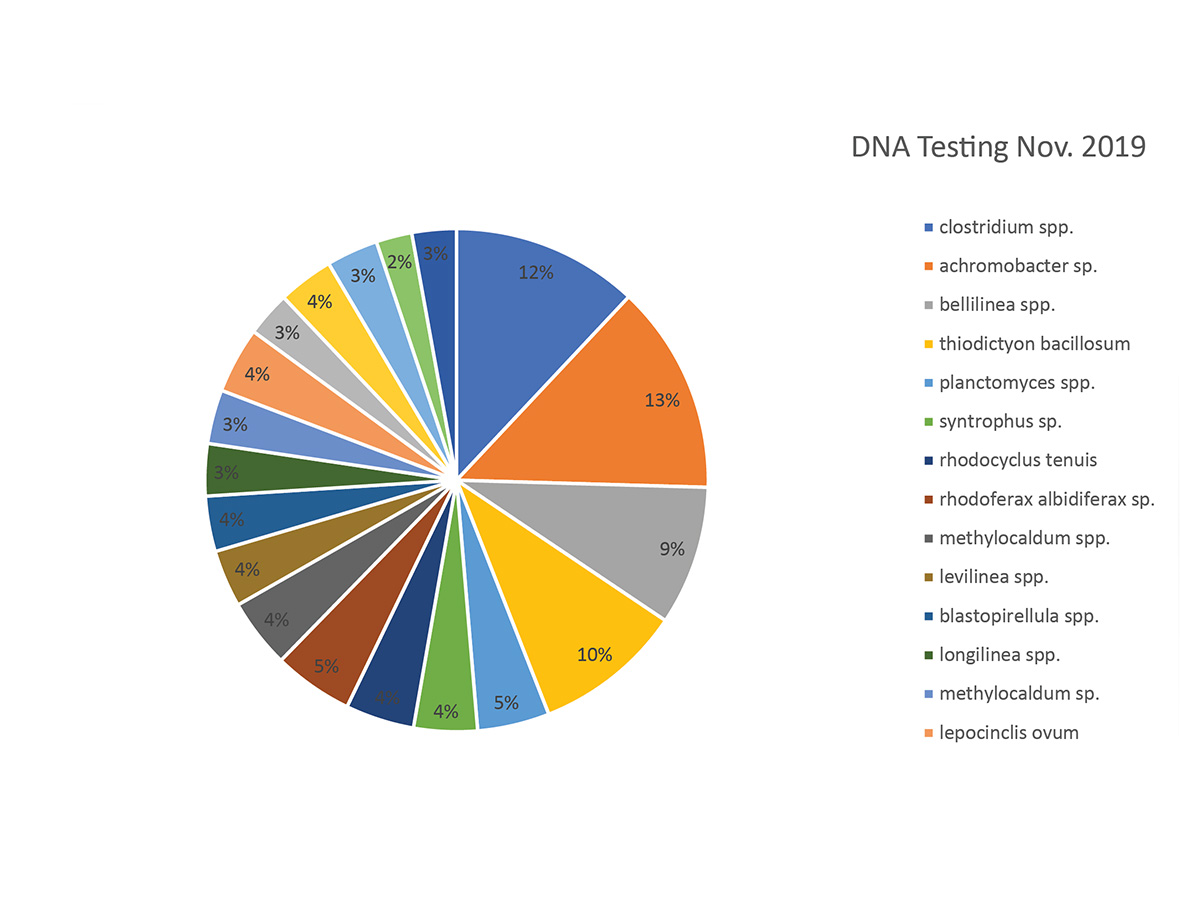Summary
In this study, a one-year bioremediation plan was implemented for a municipal wastewater treatment facility with 2 primary lagoons that were at risk of upset and in which wastewater processing capacity was reduced due to an increased sludge layer. Specific changes in strata microbial life were tracked through ATP and DNA analysis at quarterly intervals. The results pointed out the often-misunderstood fact that wastewater treatment facility lagoon sludge is not inert: it is the most biologically active layer of the water column and can be efficiently controlled and reduced through proper bioremediation interventions. Application of Bio Energizer®, a biostimulant, contributed to a more diversified microbial population that reduced the sludge layer and helped lagoon systems recover from toxicity events and periodic turnover.
Problem
A California municipal wastewater treatment facility (WWTF) with 4 lagoons primarily processed municipal waste as well as several types of commercial/industrial waste, including waste from a tomato processing plant and a dairy processing plant, for a total of 2.8 million gallons a day. The WWTF operators determined that their 10-foot-deep lagoons had reached sludge depths of 5–7 feet, putting the lagoons at risk of upset and seriously impacting the facility's wastewater processing capacity. A bioremediation plan was requested to reduce sludge levels, increase capacity, and return the system to a state of biological health.
Solution
Due to the high average sludge-blanket depth and the loss of the primary lagoon's overall capacity, a biostimulant, Bio Energizer® (BE), was selected to support the reduction of the organic solids in the system. BE is not a microbial product but a formulation of complexing agents, organic acids, natural biological stimulants, and nutrients that help balance the natural microbial ecosystem to increase bio-oxidation capacity. The biostimulant product, BE, was added via peristaltic pump to the inlets of both Pond 1A and Pond 1B to reduce the sludge. Initially the dose applied was 7 ppm (7 gallons of product to 1,000,000 gallons of influent, assuming a typical Biochemical Oxygen Demand (BOD5) of 240 mg/L) and was eventually decreased 10 months later to 5 ppm. A maintenance dose of 3 ppm was established 2 months later.
Conclusion
Through ATP analysis, it was found that the bottom sludge layer was the most biologically active layer of the lagoons, which refutes the idea that the sludge layer is inert and can only be mechanically removed. DNA analysis allowed for trending of 47 of the top different bacteria during the quarterly samples, out of the hundreds of bacteria found to be present in the two lagoons. In February 2019, the bacteria started to naturally select toward BOD and phosphorus consuming bacteria. Phosphorus-accumulating bacteria that were not present during the baseline analysis gained prominence during treatment, which was unexpected as lagoons are not known for phosphorus removal. Unsurprisingly, the work of the sludge reduction was accomplished by a variety of anaerobic bacteria.

Figure 1: Baseline DNA Testing Nov. 2018

Figure 2: DNA Testing Nov. 2019
Product Information
By design, Bio Energizer® is a balanced formulation of vitamins, trace nutrients, enzymes, organic acids, and biostimulants that stimulate the existing microbial community to greater metabolic capacity and efficiency. For more information, go to www.huma.us.

